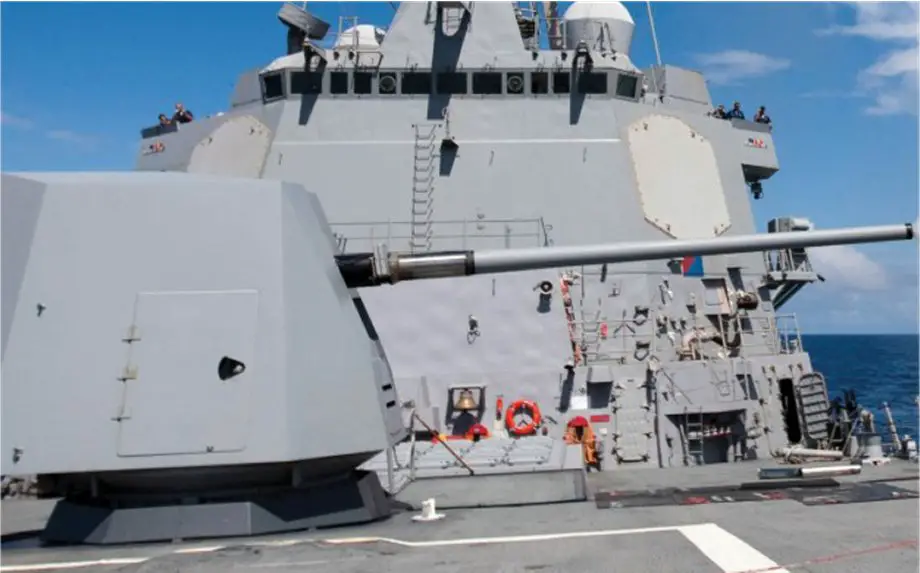Breaking news
BAE Systems to upgrade Australian Navy Anzac class frigates Mk 45 naval gun systems.
According to a PR published by BAE Systems on January 8, 2024, the firm has been awarded a substantial contract by the Commonwealth of Australia.
Follow Navy Recognition on Google News at this link
 Mk 45 Mod 4 Naval Gun System. (Picture source: BAE Systems)
Mk 45 Mod 4 Naval Gun System. (Picture source: BAE Systems)
The contract involves upgrading the Mk 45 Mod 2 naval gun systems currently installed on Anzac class frigates. This upgrade, centered around the implementation of a Common Control System (CCS), is poised to address obsolescence issues and extend the operational lifespan of these gun systems.
Key to this upgrade is the integration of electronics compatible with the Mk 45 Mod 4, the latest gun system configuration utilized by the U.S. Navy. This move not only ensures commonality and interoperability with the U.S. Navy's armaments but also equips the Mk 45s with the capability to incorporate future extended-range precision guided munitions, including advanced technologies like the hypervelocity projectile.
The CCS upgrade is not just a tactical enhancement but also a strategic investment in the longevity of the Mk 45 gun systems. It ensures that these systems remain supportable and ready to integrate cutting-edge technology features for advanced munitions and future mission capabilities, all at a significantly lower cost compared to acquiring new guns.
The contract will be executed at the BAE Systems production facility in Louisville, Kentucky, with the first upgraded system delivery expected in early 2026.
About the Mk 45 Mod 2 naval gun
BAE Systems offers a range of modernization options for the Mk 45, providing the capability to refurbish guns to an “as new” condition or to upgrade existing guns to the Mod 4 configuration. One of the cost-effective upgrades available is the integration of the Common Control System (CCS).
The Mk 45 Mod 2 CCS upgrade addresses obsolescence issues, particularly with the electronic servo control unit and fuze setter amplifier, which have remained unchanged since the original Mk 45 Mod 0 design introduced in the early 1970s.
These upgrades include complete digital control, extensive Built-In Test (BIT) features, maintenance aiding, an interactive operator interface, open computer architecture, and the adaptability to modify or add capabilities.




























